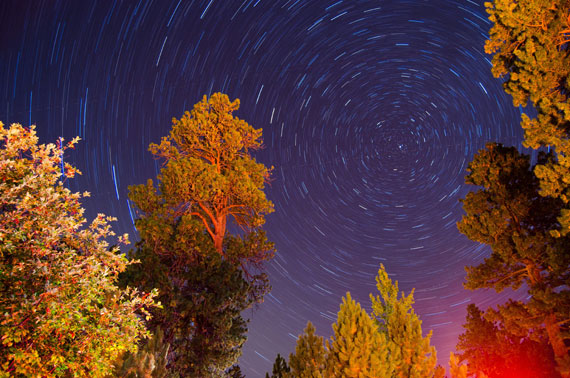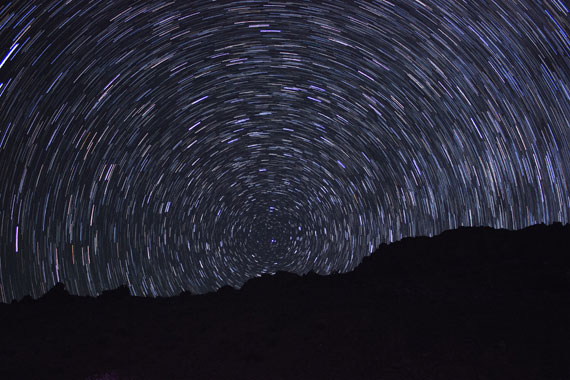Astrophotography, specifically star trail photography, offers an extraordinary way to explore and capture the awe-inspiring beauty of the night sky. Whether you are a novice photographer looking to dive into the world of astrophotography or an expert seeking to refine your techniques, this guide will provide you with practical tips and methods to capture perfect star trail photos.

30 minute single exposure captured by Lucas Ludwig
Before embarking on this fascinating journey, remember the first rule: Find a location far away from light pollution. The ideal setting for night sky photography should have minimal artificial lights to prevent light smog that can wash out stars. Choose a moonless, cloudless night to ensure maximum visibility of the stars.
Next, consider the composition. Look for an interesting foreground that can give depth to your images and make the star trails more compelling. This could include natural features like mountain ranges, bodies of water, or man-made structures like old buildings or bridges.
Equipment preparation is crucial. To capture the motion of stars clearly, you will need to keep your camera absolutely still for the duration of the shoot. A tripod or a weighted down setup can aid in this. Set your camera to manual focus, focusing on a bright star or the moon to ensure clarity. Turn off image stabilization and in-camera noise reduction. Don’t forget to check that your battery is fully charged before you start.
When it comes to camera settings, a manual white balance of around 4000 Kelvin is generally recommended for night photography. This setting provides a good balance between the cool blues of the night sky and the warmer tones of foreground objects lit by ambient light.
With your location, composition, and equipment ready, you can now dive into the actual process of capturing star trails. There are two primary methods: sequential images and single long exposure.
Method 1: Capturing Star Trails with Sequential Images
This method involves taking multiple sequential photographs over a period of time, which are then merged in post-processing to create the illusion of star trails.
- Set your camera to manual mode. A wide-open aperture, a 30-second shutter speed, and an ISO of around 800 is a good starting point.
- An intervalometer can be helpful in managing this process. This device can be programmed to shoot multiple sequential images with a constant interval between them.
- Once you have your set of images, import them into software such as Adobe Photoshop, StarStaX, or ImageStacker.
- These software programs allow you to stack your images together, blending them into a single image. Use options like gap filling to create a smooth, continuous star trail.

Stacked star trail captured by Yash Raut
Method 2: Capturing Star Trails with a Single Long Exposure
This method involves taking one long exposure photograph. The long shutter speed captures the stars’ movement across the sky.
- Again, set your camera to manual mode. Use a high-quality, fast lens, the lowest possible ISO, and adjust the shutter speed based on test shots.
- Use an intervalometer to program a single long exposure. The length of the exposure will depend on the desired length of star trails, and can vary from 15 minutes to an hour.
Finally, here’s an extra tip to spice up your star trail photography: Point your camera at Polaris, the North Star. Due to the Earth’s rotation, the stars appear to move in circles around Polaris. Therefore, framing it in your image can result in captivating circular star trails.
By following these guidelines, you will be well-equipped to delve into the magical realm of star trail photography. Keep experimenting with different locations, compositions, and exposure times to find your unique style.
For Further Training on Long Exposures:
If there was an easy way to capture long exposure photos that amaze viewers would that interest you? What if all you need is a selection of go-to settings and some low-cost accessories? So that you could capture perfectly timed long exposures every time you shoot? This in-depth course is currently 67% off if you want to check it out.

Infinite Exposure Tutorials
This 5-hour course walks you through the entire process of taking stunning long exposure photos. Including camera settings, gear and setup, daytime shooting, and night-time shooting. With and without filters.
Deal ending soon: Infinite Exposures at 67% Off
Like This Article?
Don't Miss The Next One!
Join over 100,000 photographers of all experience levels who receive our free photography tips and articles to stay current:






Leave a Reply